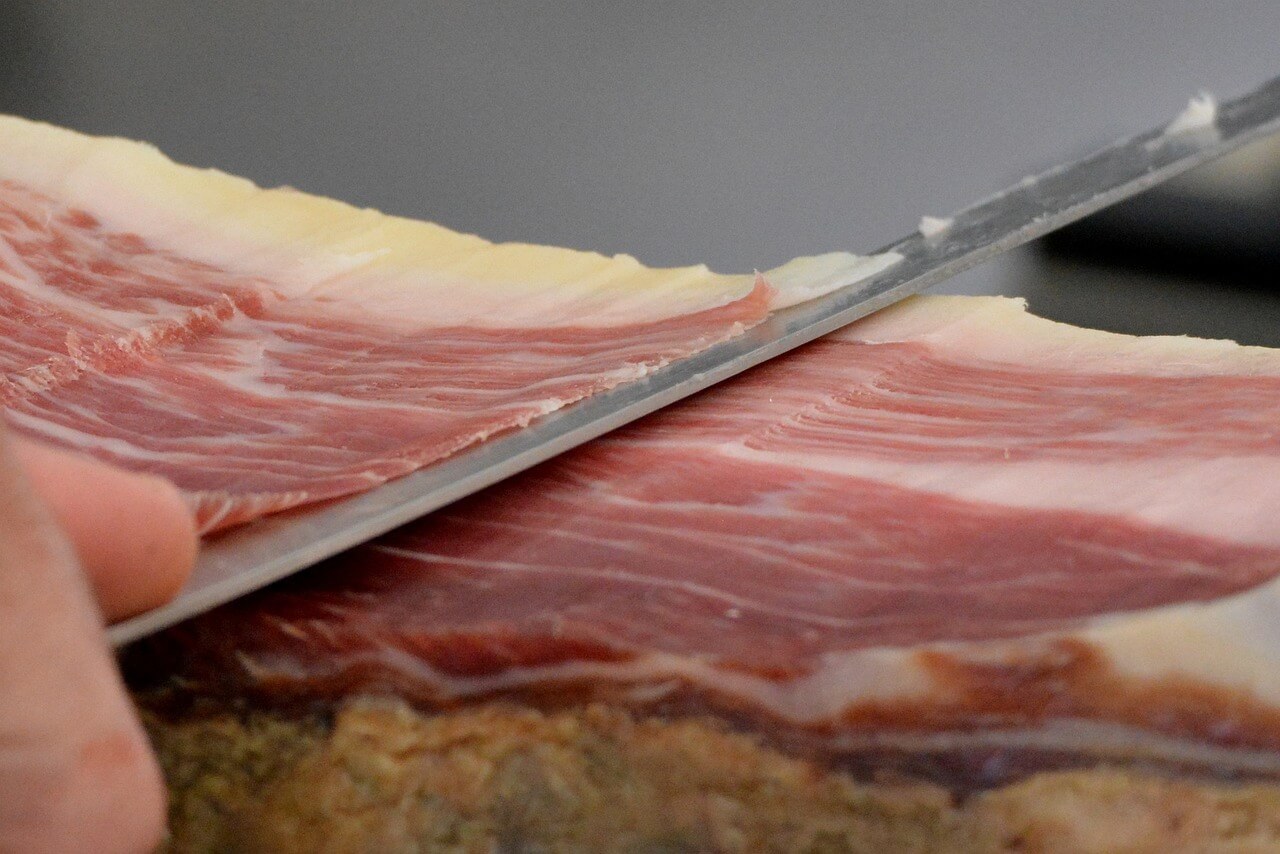The Art of Cutting Iberian Ham: Complete Guide to a Perfect Slice
By Paraíso Del Jamón
Published: 11/1/2024

Iberian ham is one of the most cherished delicacies in Spanish cuisine. Its complex and unique flavor, and unparalleled quality stem from both the careful breeding and the precision in cutting and serving it. A good cut not only ensures maximum utilization of the piece but also highlights the taste and aromatic qualities of each slice. In this guide, we will teach you how to properly cut Iberian ham, from preparing the tools to preserving the piece after cutting.
Preparing the Space and Necessary Tools
Before starting, it is essential to have a clean, spacious, and well-lit work area. The environment should allow you to move safely and comfortably. The right tools are also indispensable for efficient and precise cutting. The ham holder is essential, as it ensures the stability of the ham during the process. A solid, well-anchored holder will prevent unwanted movements that could lead to uneven cuts or, worse, an accident.
The ham knife is the main tool. This long, flexible, and sharp knife is designed to glide effortlessly through the meat, allowing for thin and uniform slices. Don't forget to keep a sharpener on hand, as the key to a good cut is a knife in perfect condition. Finally, to work safely, use cut-resistant gloves or a kitchen cloth for a firm grip.
Positioning the Ham on the Holder
The placement of the ham depends on how long it will be consumed. If prolonged consumption is expected, it is advisable to position it with the hoof facing down, allowing you to start by cutting the leaner and drier part first. However, if the ham is expected to be consumed quickly, it is better to start with the hoof facing up, accessing the "maza," the juiciest part, first. Ensure that the ham is securely fixed on the holder, with no movement. A well-secured piece guarantees more precise and safe cuts.
Removing the Rind and Outer Layer
To begin, it is essential to remove the hard rind and the outer yellow fat, which are not visually appealing and have a rancid taste that is unpleasant to the palate. Using a boning knife or paring knife, make a deep cut around the shank, marking a boundary that allows you to access the "maza" easily. Once the cut is made, start removing the outer fat with firm but controlled movements, maintaining an angle that lets you uncover the meat without losing the white fat layer, which will add juiciness and flavor to the slices.
The Art of Cutting Thin Slices
One of the keys to enjoying Iberian ham to the fullest is cutting thin and uniform slices. Start with the "maza," the widest and juiciest part of the ham. Position the knife at an angle that allows it to glide smoothly over the meat, making long and even movements from the heel to the tip of the knife. Avoid applying too much pressure; the knife should slide, almost floating, to achieve thin slices that melt in your mouth. Ensure that the slices are of similar size for aesthetic presentation and uniform taste. The slices should be almost transparent, allowing you to appreciate the complexity of their color and texture.
Reaching the "Contramaza" and Around the Bone
As you approach the "contramaza," the narrower part of the ham, your cutting technique should adjust. This area is leaner and requires more skill to avoid waste. It is particularly flavorful and has a more intense taste, making it ideal for adding to stews or preparing broths.
Preserving the Ham Between Cuts
To maintain the quality of the ham and prevent it from drying out between cutting sessions, it is important to protect the exposed surface. A traditional and effective method is to save some of the white fat removed at the beginning of the process and use it to cover the cutting area. This fat acts as a natural seal, preserving the meat's moisture. If you prefer a more modern method, you can cover the area with a layer of plastic wrap to help maintain freshness. Additionally, it is essential to store the ham in a cool, dry place, away from heat sources or excessive humidity.
Final Tips for a Perfect Cut
Cutting Iberian ham requires more than technique; it demands patience and dedication. Be sure to sharpen your knives frequently to maintain clean and safe cuts. Cut slowly, enjoying the process and paying attention to each detail, as this will reflect in the quality of the slices. Iberian ham is best enjoyed when cut with care, and there is nothing more satisfying than serving a perfectly cut portion, accompanied by a glass of good wine or sherry that enhances its qualities.
Cutting Iberian ham is an art worth learning and perfecting. By following these steps, you can make the most of the piece and highlight its full potential. It's not just about cutting a high-quality product but honoring a culinary tradition that has been perfected over centuries. A well-executed cut not only highlights the flavor and texture of the ham but turns the act of serving it into a memorable experience worth sharing.